The Japandi design style merges the elegance of Japanese aesthetics with the cozy warmth of Scandinavian influences, resulting in a beautiful balance of minimalism and functionality. This design philosophy emphasizes simplicity, natural materials, and an uncluttered environment, which creates a serene atmosphere perfect for a living room.
As people increasingly seek peace and tranquility in their homes, the Japandi style has gained popularity for its ability to foster a warm and inviting space. In this article, we will explore 10 stunning Japandi living room design ideas that can inspire your next home renovation project.
1. Neutral Color Palette
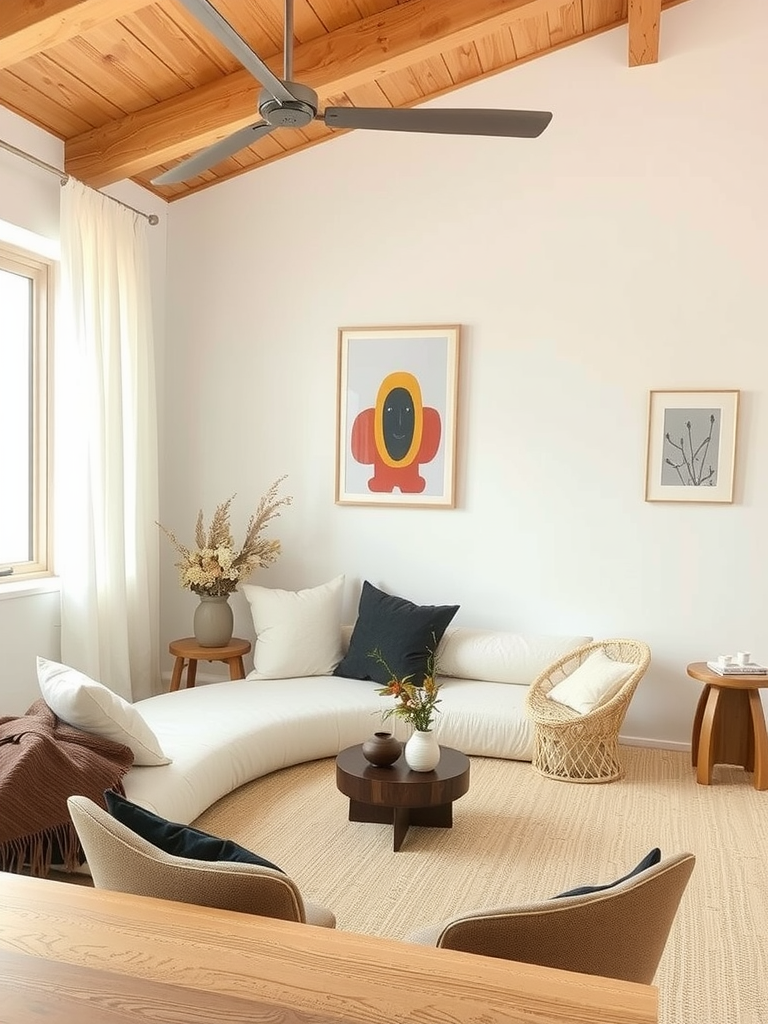
A neutral color palette is a fundamental aspect of Japandi design. Using shades of whites, beiges, and soft grays creates a calming backdrop that enhances the room’s spaciousness. Consider painting the walls in warm neutrals and adding natural wood elements for a cohesive look.
2. Natural Materials
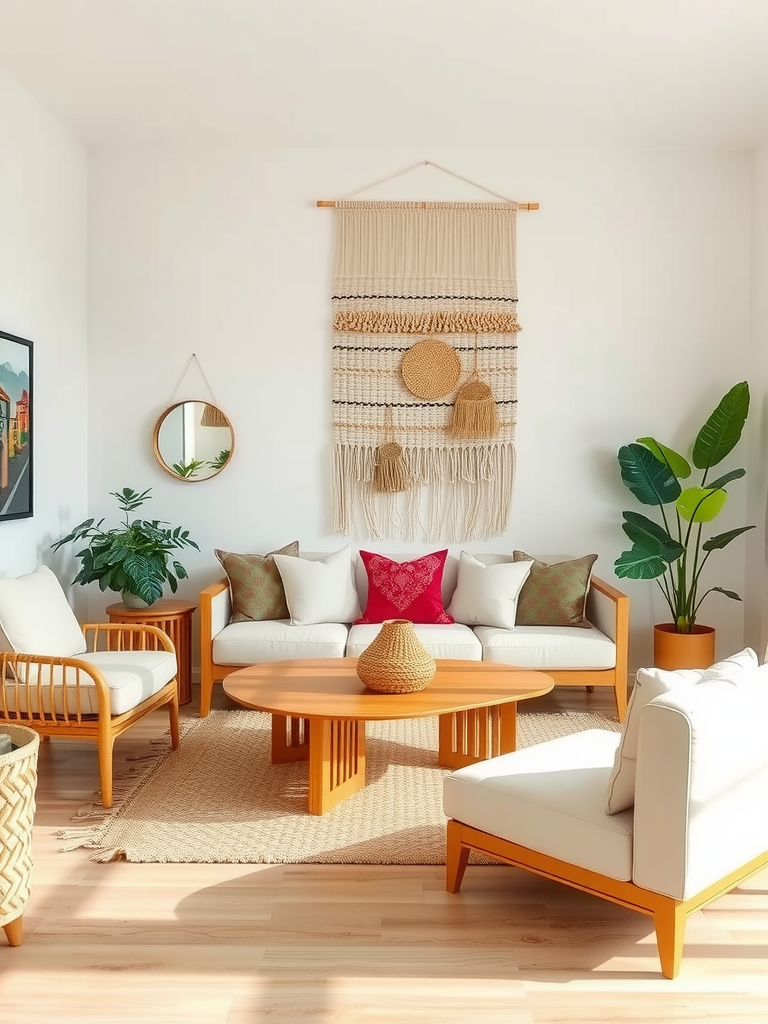
Incorporating natural materials is essential in Japandi design. Think wooden furniture, rattan accents, and cotton or linen textiles. A low-profile wooden coffee table surrounded by comfortable, minimalist sofas can create a focal point in the living room.
Opting for handmade ceramics or woven wall hangings adds unique character and charm while establishing a tactile experience in the space, enhancing your connection to nature.
3. Minimalist Furniture
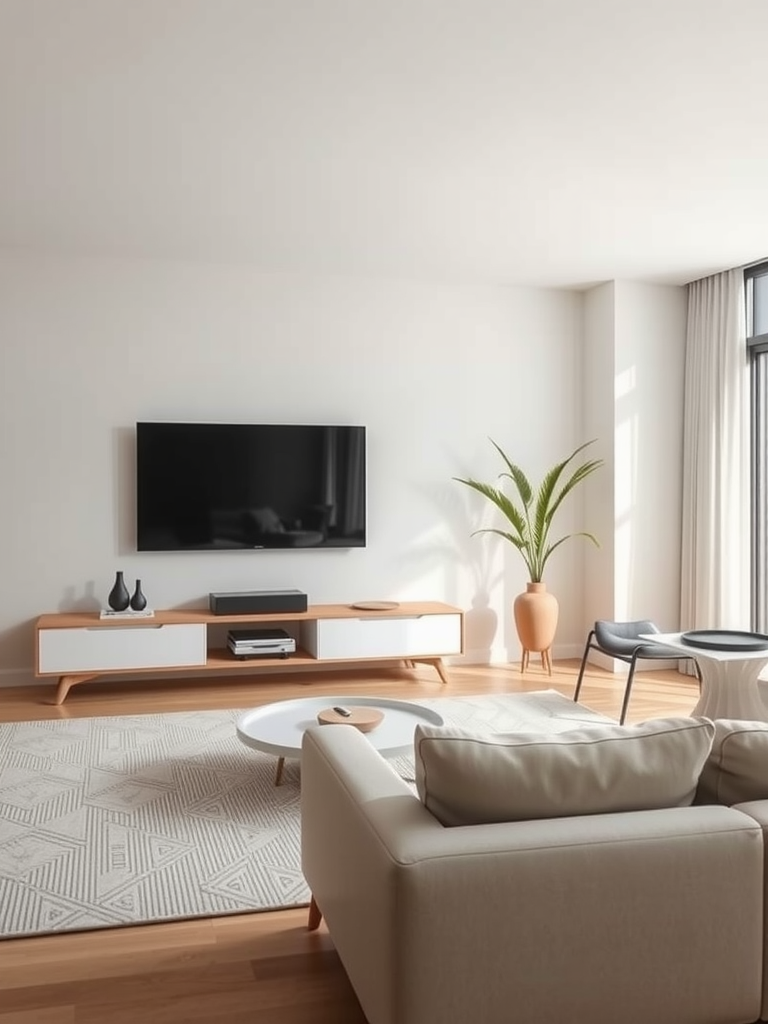
Japandi design values functionality without sacrificing style. Choosing minimalist furniture enhances the room’s aesthetic while ensuring it’s practical. Look for smooth, simple lines and multipurpose pieces that offer storage without bulk.
A sleek media console or a low sofa can keep the living room feeling open and airy, allowing for ease of movement and an emphasis on simplicity.
4. Zen-Inspired Decor
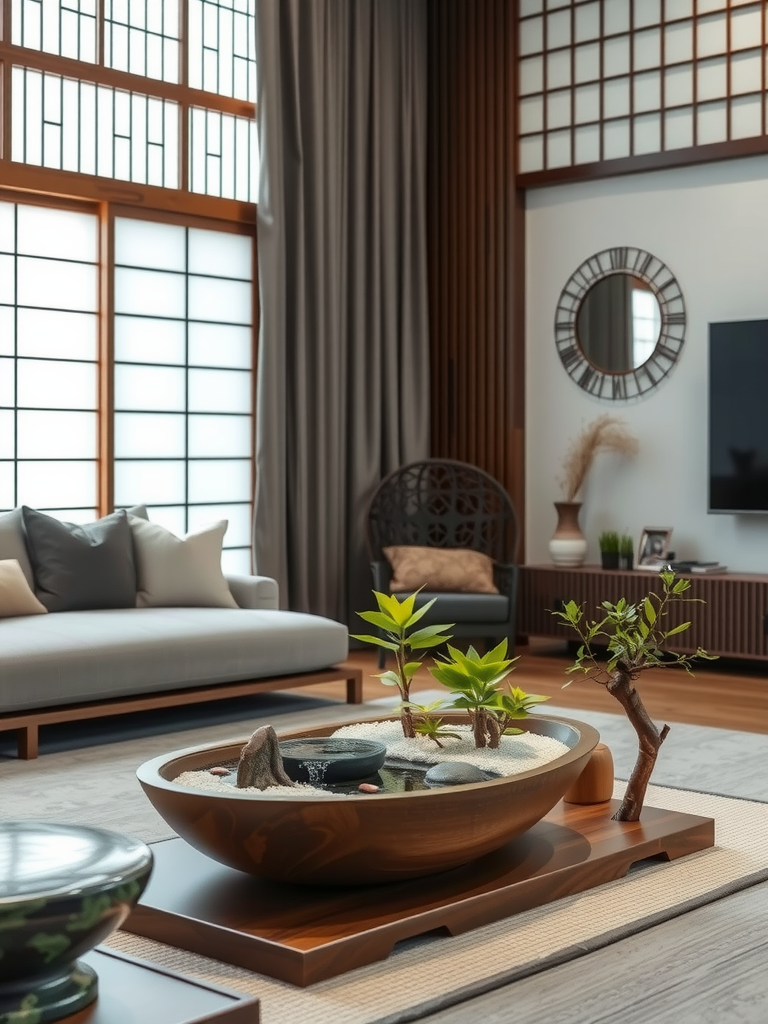
Zen philosophy plays a significant role in Japandi living rooms. Incorporate decor that reflects calmness and tranquility, such as a simple indoor water feature or a zen garden table centerpiece. Fresh plants, like bamboo or succulents, can also contribute to a sense of relaxation.
By introducing elements that promote peace and quiet reflection, you create a living room that becomes a retreat from the chaos of daily life, fostering a harmonious environment for relaxation and socialization.
5. Functional Layout
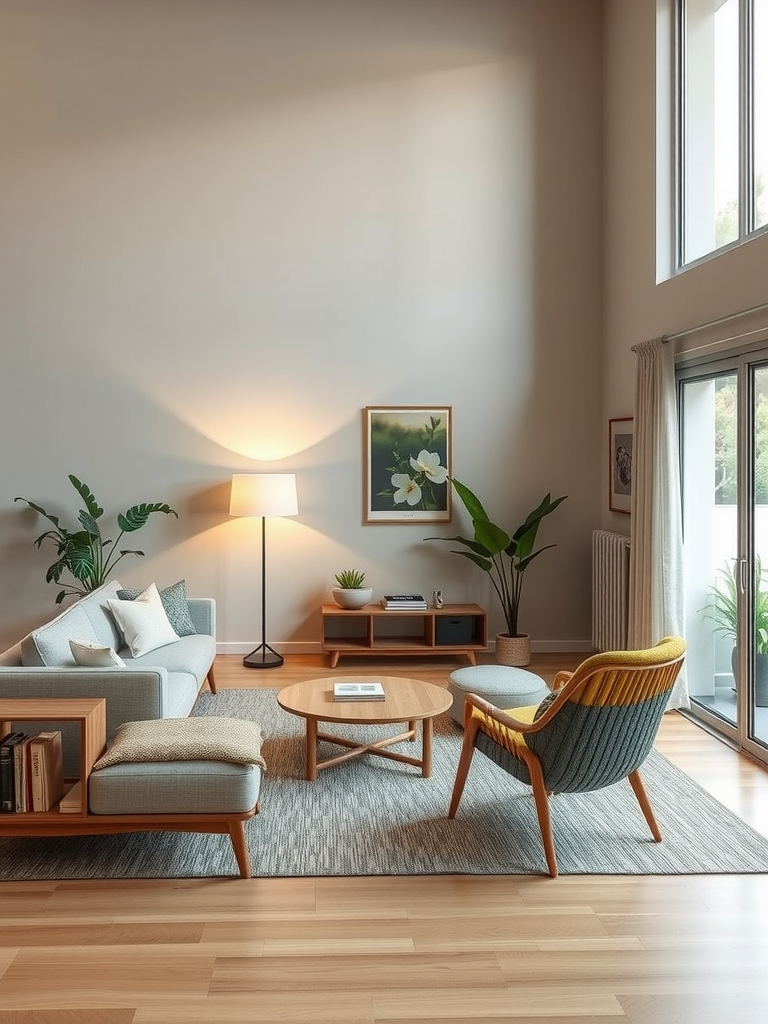
The layout of a Japandi living room should flow naturally and encourage interaction. Arrange seating to facilitate conversation while leaving enough space for movement. Avoid overcrowding the room with furniture, focusing instead on fewer, quality pieces that serve a purpose.
Creating zones within the living room, such as a cozy reading nook with a floor lamp and a comfortable chair, adds functionality without compromising the minimalist aesthetic, providing intimate areas within the open space.
6. Soft Textiles
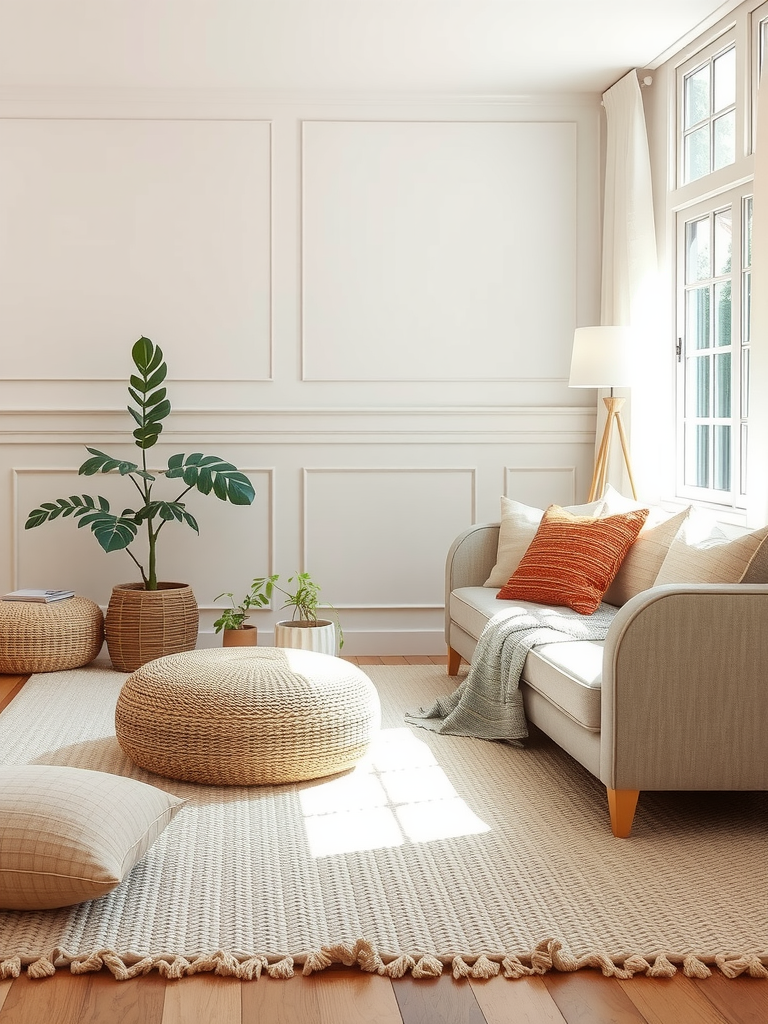
Adding soft textiles is essential to achieving a comfortable and inviting Japandi living room. Incorporate cushions, throws, and rugs in gentle colors and natural materials. A plush area rug can anchor the space while adding warmth underfoot.
Mixing textured fabrics, such as cotton, wool, and hemp, can elevate the design, making the space feel cozy and layered without being overwhelming.
7. Artistic Touches

Art plays a vital role in introducing personality to your Japandi living room. Choose art pieces that reflect simplicity, such as black-and-white photography or minimalist paintings. Select art that brings harmony and balance to the space, avoiding overly colorful or chaotic pieces.
Using simple wooden frames or canvas without flashy designs will keep the focus on the artwork itself, harmonizing with the ethos of Japandi design.
8. Cozy Lighting
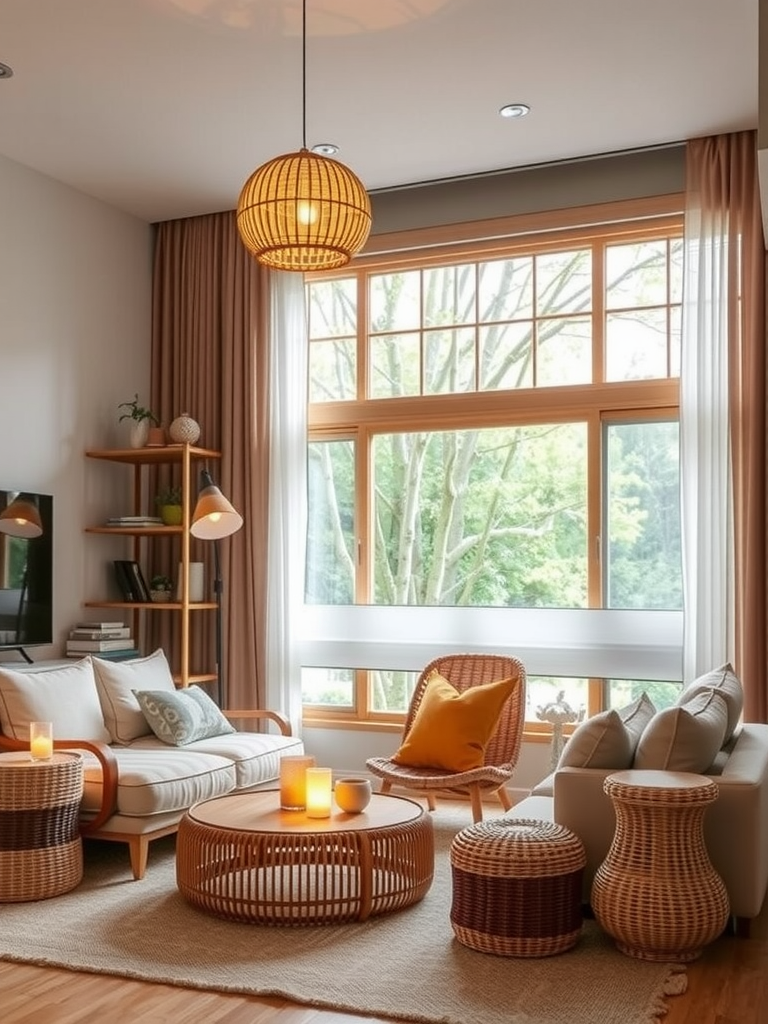
Lighting can dramatically influence the mood of a living room. In Japandi design, natural light is prioritized, so keep windows unobstructed. Add soft, warm lighting through floor lamps, table lamps, or lanterns to create an inviting ambiance in the evenings.
Using light fixtures made from natural materials, like rattan or wood, ensures that the lighting complements the overall style while adding an extra cozy touch to the living area.
9. Integrating Nature
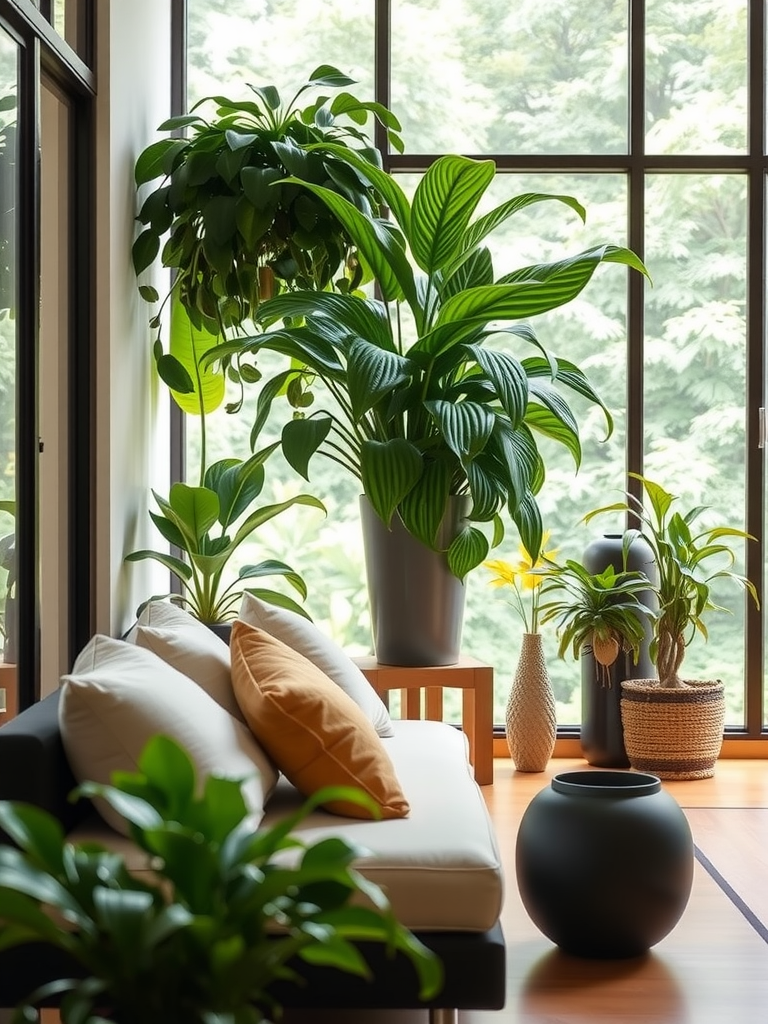
Bringing nature indoors is a key principle of Japandi design. Incorporate plants, large windows, or even a small indoor garden to create a seamless connection between your living room and the outdoors. Plants add color and vitality, enhancing the serene atmosphere.
Select low-maintenance plants, such as snake plants or pothos, that thrive indoors and purify the air, ensuring that your living room remains a fresh and inviting space.
10. Personal Touches
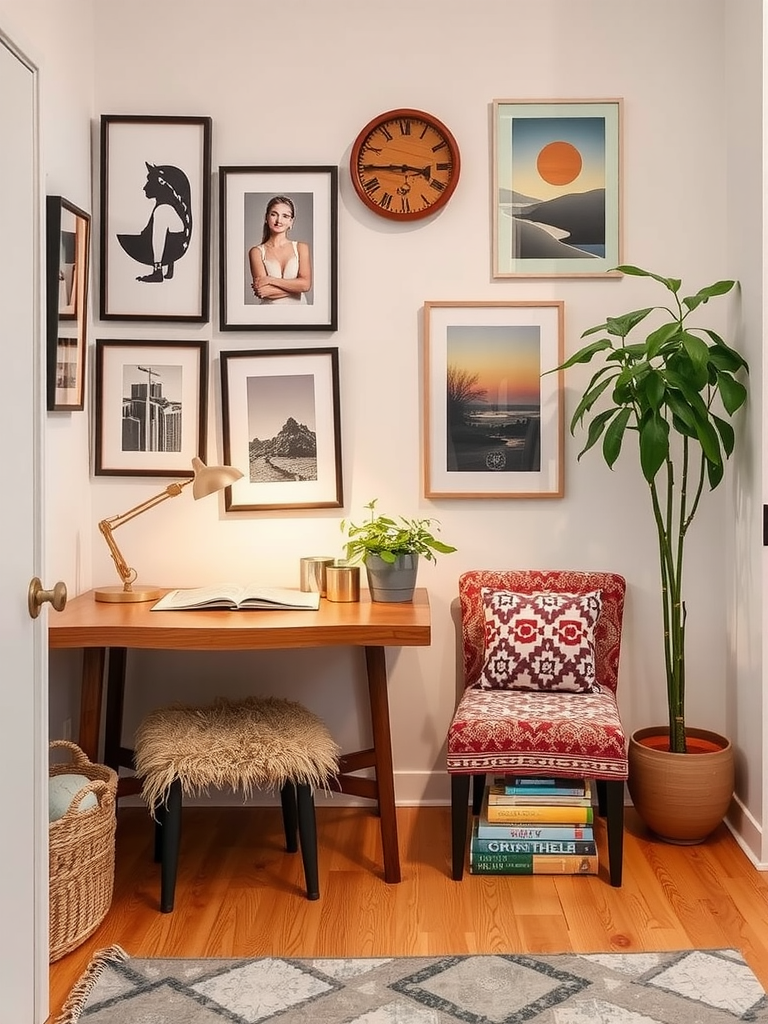
While Japandi emphasizes minimalism, adding personal touches is essential to make the space uniquely yours. Display cherished books, personal photos in simple frames, or handmade artisan pieces that have significance to you.
These thoughtful additions not only enhance the aesthetic but also create a sense of warmth and comfort, ensuring your living room feels like home.
Conclusion
In conclusion, a Japandi living room merges simplicity, functionality, and beauty, creating a perfect retreat for relaxation and socializing. By applying these 10 design principles, you can develop a space that exudes tranquility while reflecting your personal style.
Frequently Asked Questions
What is Japandi design?
Japandi design is a fusion of Japanese elegance and Scandinavian minimalism, focusing on simplicity, natural materials, and functionality.
How can I incorporate Japandi style in my living room?
To incorporate Japandi style, use a neutral color palette, natural materials, minimalist furniture, and soft textiles to create a serene atmosphere.
What colors are best for a Japandi living room?
Neutral colors such as whites, beiges, and soft grays are best for creating a calming and cohesive Japandi living room.
Is Japandi design suitable for small spaces?
Yes, Japandi design is ideal for small spaces due to its emphasis on minimalism and decluttering, which can make a space feel larger.
Can I mix Japandi with other styles?
Absolutely! Japandi can be beautifully combined with other design styles, as its principles of simplicity and natural materials can complement various aesthetics.


